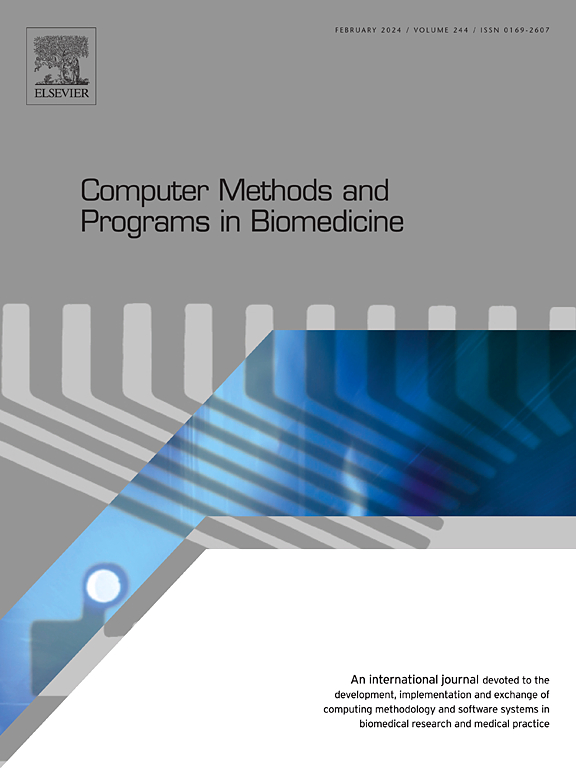设计双稳定聚合物血管支架(BPVS)并评估其生物力学性能
IF 4.9
2区 医学
Q1 COMPUTER SCIENCE, INTERDISCIPLINARY APPLICATIONS
引用次数: 0
摘要
背景与目的聚合物血管支架普遍存在生物力学性能差的缺点,可能无法达到支持阻塞血管恢复正常血流的治疗目的。依赖于两种稳定构型的双稳态结构似乎可以改善支架的弱强度。本文主要设计一种双稳态结构的高分子血管支架,以增强径向力,减小径向后坐力和管壁剪应力。方法系统地利用倾斜支架与平面支架的双稳态特性,推导出双稳态支架。通过有限元方法揭示了不同几何形状的倾斜支撑与双稳性能之间的映射关系,并进一步探讨了平面单元的双稳特性。采用数值模拟与实验相结合的方法,对双稳态聚合物支架的径向力、径向后坐力、血管壁剪切应力等生物力学性能进行了分析和评价。结果倾斜支板几何形状与双稳性之间的映射关系为(t/L, θ) =(0.03, 10°~ 60°)和(t/L, θ) =(0.03 ~ 0.1, 30°~ 40°)是可选参数的最宽范围。当双稳态评价因子B = T/ T≥4时,BREH细胞具有显著的双稳态特性。聚合物支架的有限元结果表明,双稳结构明显增大了聚合物支架的径向力(2.52 N),减小了聚合物支架的径向后坐力(1.69%)。双稳结构使血管壁剪应力减小至0.04177 MPa。结论聚合物支架具有较强的生物力学性能,降低了其植入血管后的二次损伤风险。双稳定聚合物支架具有支持阻塞血管和恢复血流的潜力。本文章由计算机程序翻译,如有差异,请以英文原文为准。
Design a bistable polymeric vascular stent (BPVS) and evaluate the biomechanical properties
Background and objectives
Polymeric vascular stents generally have the disadvantages of poor biomechanical properties, which may not achieve the therapeutic purpose of supporting the blocked vascular vessels to restore normal blood flow. The bistable structure depending on the two stable configurations seems to improve the weak strength of stents. This paper mainly designs a polymeric vascular stent with bistable structure to enhance the radial force, and reduce the radial recoil and wall shear stress.
Methods
The bistable stents were derived from the bistable property of the tilted strut and the planar cell systematically. The mapping relationship between the tilted struts with different geometries and the bistable performance was revealed by finite element method, and then the bistable characteristics of the planar cells were further explored. Furthermore, the biomechanical performance involving radial force and radial recoil of bistable polymeric stents, and wall shear stress of vascular vessels were analyzed and evaluate by combining numerical simulation and experiments.
Results
The mapping relation between geometries and bistable properties of tilted struts was that the (t/L, θ) = (0.03, 10° ∼ 60°), and (t/L, θ) = (0.03 ∼ 0.1, 30° ∼ 40°) were the widest ranges of optional parameters. When the bistable evaluation factor B = T/t ≥ 4, the BREH cells had outstanding bistable properties. The finite element results of polymeric stents indicated that the bistable structure obviously greatened the radial force (2.52 N), and lessened the radial recoil (1.69 %) of the polymeric stent. Besides, the bistable structure minified the wall shear stress of vascular vessels to 0.04177 MPa.
Conclusions
It could be concluded that the bistable structure not only endowed polymeric stents with strong biomechanical properties, but also reduces the risk of secondary injury after its being implanted into vascular vessels. The bistable polymeric stents have the potential to support the blocked vessels and restore the blood flow.
求助全文
通过发布文献求助,成功后即可免费获取论文全文。
去求助
来源期刊

Computer methods and programs in biomedicine
工程技术-工程:生物医学
CiteScore
12.30
自引率
6.60%
发文量
601
审稿时长
135 days
期刊介绍:
To encourage the development of formal computing methods, and their application in biomedical research and medical practice, by illustration of fundamental principles in biomedical informatics research; to stimulate basic research into application software design; to report the state of research of biomedical information processing projects; to report new computer methodologies applied in biomedical areas; the eventual distribution of demonstrable software to avoid duplication of effort; to provide a forum for discussion and improvement of existing software; to optimize contact between national organizations and regional user groups by promoting an international exchange of information on formal methods, standards and software in biomedicine.
Computer Methods and Programs in Biomedicine covers computing methodology and software systems derived from computing science for implementation in all aspects of biomedical research and medical practice. It is designed to serve: biochemists; biologists; geneticists; immunologists; neuroscientists; pharmacologists; toxicologists; clinicians; epidemiologists; psychiatrists; psychologists; cardiologists; chemists; (radio)physicists; computer scientists; programmers and systems analysts; biomedical, clinical, electrical and other engineers; teachers of medical informatics and users of educational software.
 求助内容:
求助内容: 应助结果提醒方式:
应助结果提醒方式:


